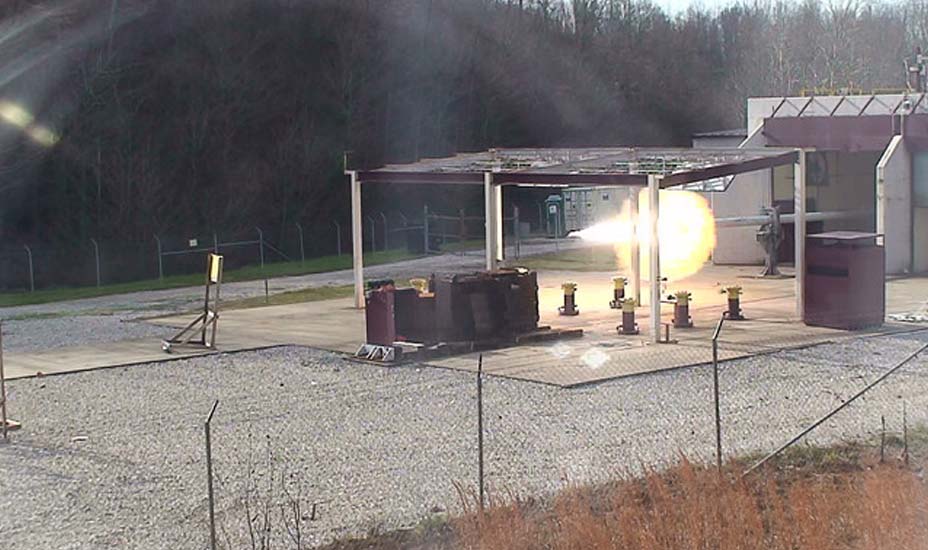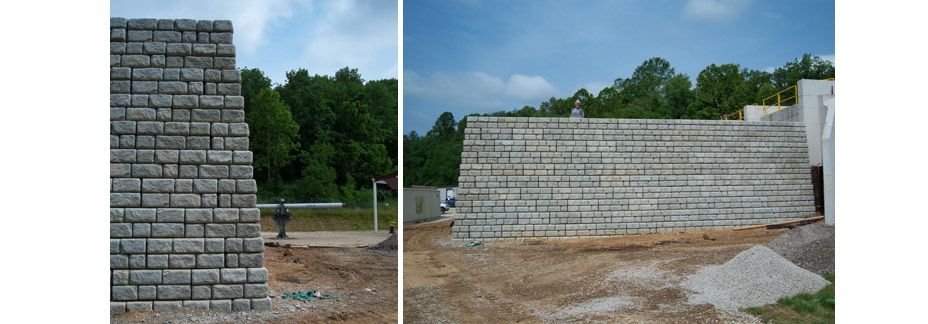How to Design and Build an Outdoor Rifle and Weapons Testing Range for Naval Weapons
THE CHALLENGE
Redi-Rock retaining walls were recently installed at a naval weapons testing facility in West Virginia to protect several buildings from blast damage. The Utron, Inc. testing facility is working on a weapons project to develop a 155 millimeter combustion light gas gun for use on U.S. Navy ships, according to an article published in West Virginia's State Journal. The gun uses hydrogen and oxygen as a propellant and can fire a shell at more than 8,000 feet per second (2438.4 meters per second).
The vibrations from the blast from the gunfire were causing damage to adjacent buildings. The hydrogen gun fires a large shell at more than 8,000 feet per second (2438.4 meters per second) and has a range of about 200 miles (321.9 kilometers). Worried that the blast impact would eventually cause serious structural damage to the buildings, Utron needed to create a barrier to absorb the brunt force of the blast.
The Redi-Rock wall protects nearby buildings from blast impacts.
THE SOLUTION
Originally a dirt berm was considered, but there just wasn't enough room to achieve the height necessary. Designers began searching for a big block retaining wall solution and discovered Redi-Rock online.
After speaking with Redi-Rock engineers and their local Redi-Rock manufacturer, Utron selected Redi-Rock based on its massive size and aesthetically pleasing cobblestone appearance. Utron also liked the fact that they could use their own crews to install the wall.
The wall was 16.5 feet (5 meters) tall at the highest point, encompassing 1,150 square feet (106.8 square meters) total. The wall was reinforced with geogrid.
"We liked that it wasn't just a big plain block; it looks like smaller blocks," said Dave Kruczynski, vice president of defense systems for Utron. "It's big, it does the job, and it looks good. What more could you ask for in a wall?"
Since the wall has been installed, no further damage to the adjacent building has occurred and Utron has been pleased with the results.

The gun uses hydrogen and oxygen as a propellant and can fire a shell at more than 8,000 feet per second (2438.4 meters per second). The vibrations from the blast from the gunfire were causing damage to adjacent buildings.
PROJECT DETAILS
Project: Utron Research Facility Wall #85 Customer: Utron Inc. Installer: Utron Location: Ashton, West Virginia Year Built: 2008
PRODUCTS FEATURED IN THIS CASE STUDY
Reinforced Retaining Wall Blocks - Build MSE retaining walls with the revolutionary Redi-Rock Positive Connection (PC) blocks.
Cobblestone Texture Blocks - Redi-Rock Cobblestone blocks feature a great stacked stone aesthetic with the appearance of six smaller blocks.
